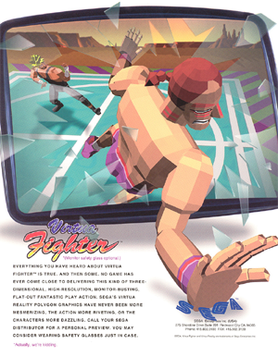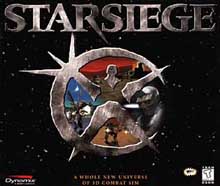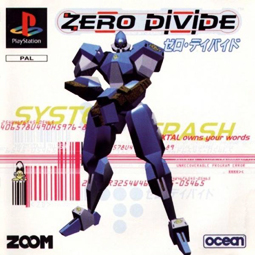
Virtua Fighter is a fighting game created for the Sega Model 1 arcade platform by AM2, a development group within Sega, headed by Yu Suzuki. An early prototype version was location tested in Japan by August 1993, before the complete game was released worldwide in December 1993. It was the first arcade fighting game to feature fully 3D polygon graphics. The game was ported to Sega Saturn as a global launch title in 1994 and 1995, and also received a port to the Sega 32X.

Rise of the Robots is a fighting game released by Time Warner Interactive in 1994. Originally developed for the Amiga and DOS by Mirage's Instinct Design, it was ported to various video game consoles, including the Super NES, the Mega Drive, and the 3DO Interactive Multiplayer. The game includes a single-player mode in which the player assumes the role of the ECO35-2 Cyborg as he attempts to stop the Supervisor, who has taken over Electrocorp's facilities in Metropolis 4, and a two-player mode in which the second player controls a character chosen from among ECO35-2's enemies.

Starsiege is a mecha-style vehicle simulation game developed by Dynamix and released in 1999. Starsiege is set in the Metaltech/Earthsiege universe, which contains its predecessors Earthsiege (1994), Battledrome (1994), and Earthsiege 2 (1996). This universe also includes action game Hunter Hunted (1996), strategy games Mission Force: Cyberstorm (1996) and Cyberstorm 2: Corporate Wars (1998). It also includes the sequelsStarsiege: Tribes and all subsequent Tribes titles. In 2015, this game and the rest of the Metaltech/Tribes series were released as freeware by Hi-Rez Studios, but Battledrome and the Cyberstorm series were not.
Mugen is a freeware 2D fighting game engine designed by Elecbyte. Content is created by the community, and thousands of fighters, both original and from popular fiction, have been created. It is written in C and originally used the Allegro library. The latest versions of the engine use the SDL library. The engine takes its name from the Japanese word 無限.

Mega Man X is a 1993 action-platform game developed and published by Capcom for the Super Nintendo Entertainment System. It was the first Mega Man game for the 16-bit console and the first game in the Mega Man X series, a spin-off to the original Mega Man series that began on the Super NES's predecessor, the Nintendo Entertainment System. Mega Man X was released in Japan on December 17, 1993 and was released in both North America and Europe the following year. Taking place a century after the original Mega Man series, Mega Man X is set in a futuristic world populated by both humans and "Reploids", robots capable of thinking, feeling, and growing like their human creators. Because of these complex attributes, many Reploids are prone to destructive, renegade activity and are thereafter referred to as "Mavericks". The plot of the game follows the protagonist X, an android member of a military task force called the "Maverick Hunters". With the help of his partner Zero, X must thwart the plans of Sigma, a powerful Maverick leader wishing to bring about human extinction.

One Must Fall: 2097 is a fighting video game for all IBM-compatible computers on DOS, programmed by Diversions Entertainment, published by Epic MegaGames and released in October 1994. The game was later patched to include multiplayer support. In February 1999, the game was declared freeware by the developers. A sequel titled One Must Fall: Battlegrounds was released in 2003.

Alien Arena is an open-source, stand-alone first-person shooter video game. Begun by COR Entertainment in 2004, the game combines a 1950s-era sci-fi atmosphere with gameplay similar to the Quake, Doom, and Unreal Tournament series. Alien Arena focuses mainly on online multiplayer action, although it does contain single-player matches against bots.

Earthsiege 2 is a mech-style vehicle simulation game developed by Dynamix, produced by Frank Evers (NYPH), and released in 1996. Earthsiege 2 is set in the Earthsiege universe, which contains its predecessors Earthsiege (1994) and Battledrome (1995), as well as the action game Hunter Hunted (1996), strategy games MissionForce: CyberStorm (1997) and Cyberstorm 2: Corporate Wars (1998), simulation Starsiege (1999), and first-person shooters Starsiege: Tribes (1999), Tribes 2 (2001), Tribes: Aerial Assault (2002), Tribes: Vengeance (2004) and Tribes: Ascend (2012).
The Sango Fighter games are a series of fighting game for DOS made by the Taiwanese Panda Entertainment. Set in the Three Kingdoms period of Chinese history, it is very similar to Street Fighter and Samurai Shodown, but with historical context.

Armored Core: Nine Breaker is a 2004 third-person shooter mecha video game developed by FromSoftware for the PlayStation 2. It is the ninth entry in the Armored Core series and a spin-off to Armored Core: Nexus.

Teenage Mutant Ninja Turtles: Tournament Fighters, or Teenage Mutant Hero Turtles: Tournament Fighters in Europe, is the title of three different fighting games based on the Teenage Mutant Ninja Turtles, produced by Konami for the Nintendo Entertainment System, Sega Genesis, and Super NES and released during a period between 1993 and 1994. Konami produced a different fighting game based on the franchise each featuring a differing cast of characters for the platforms. All three versions of the game were re-released as part of Teenage Mutant Ninja Turtles: The Cowabunga Collection in 2022. with online play using rollback netcode for the SNES version of the game.

One Must Fall: Battlegrounds is a fighting game for Microsoft Windows. Developed by American studio Diversions Entertainment and co-published in December 2003 by Diversions Publishing and Trisynergy Inc. following nearly 7 years of development, One Must Fall: Battlegrounds brought the One Must Fall series into a second installment released in an age where the gaming world expected graphics and gameplay in three dimensions with internet gameplay as an integral portion of the offering.
Little Fighter 2 is a Hong Kong freeware PC fighting game for Windows and is the sequel to the game Little Fighter. Little Fighter 2 was created by Marti Wong and Starsky Wong in 1999, and received a long series of updates.

Lost Vikings 2 is a 1997 puzzle-platform game developed by Beam Software and published by Interplay. All versions of the game, except the SNES release, were titled Lost Vikings 2: Norse by Norsewest. The sequel to The Lost Vikings, it features the original three characters plus two new playable characters: Fang the werewolf and Scorch the dragon. The gameplay remains largely the same, though the three Viking characters all have new or modified abilities.

Clean Asia! is a freeware vertically scrolling shooter video game. It was developed by Jonatan "Cactus" Söderström and released for Windows on February 1, 2007.
Puyo Puyo (ぷよぷよ), previously known as Puyo Pop outside Japan, is a series of tile-matching video games created by Compile. Sega has owned the franchise since 1998, with games after 2001 being developed by Sonic Team. Puyo Puyo was created as a spin-off franchise to Madō Monogatari, a series of first-person dungeon crawler role-playing games by Compile from which the Puyo Puyo characters originated. The series has sold over 10 million copies, including the Madō Monogatari games.

Zero Divide (ゼロ・ディバイド) is a 1995 3D fighting video game developed by Zoom for the PlayStation, originally released in August 1995 and also as a launch title in North America. A Windows PC port was later released, subtitled Techno Warrior in North America. Zero Divide has a robot theme and features mechanics similar to Virtua Fighter of the era; it was one of the earliest polygon-based fighting games, on home consoles coming only after Virtua Fighter, Battle Arena Toshinden and Tekken. The game received a positive reception and was especially popular in Japan, where it was later re-released in 2010 on newer systems through the PlayStation Network. It was followed up by a sequel, Zero Divide 2: The Secret Wish (1997).
Clone Drone in the Danger Zone is a beat 'em up video game developed and published by Doborog Games. Initially made available as an early access game on Steam in 2017, it was released for macOS, Microsoft Windows, Nintendo Switch, PlayStation 4, and Xbox One on July 27, 2021.















